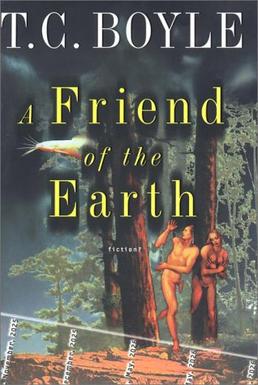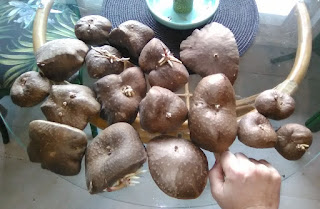
I discovered Rob Dunn while researching the Stop Fossil Fuels biological annihilation page. I greatly enjoyed his article on the perhaps foolhardy attempt to estimate the number of global species. His humorous yet informative approach convinced me to read Every Living Thing. The subtitle—Man's Obsessive Quest to Catalog Life, From Nanobacteria to New Monkeys—only superficially summarizes the scope.
The book does indeed portray the work—and, frequently, in laugh-out-loud moments, the quirks—of scientists from Carl Linnaeus to Carl Sagan, with dozens in between. (Including, disproportionately, at least three more "Carls.") But the underlying theme is awe of and love for biological life, in all its frequently unbelievable, unimaginable, and incomprehensible richness.
Dunn zooms from the mostly visible...
There are more species that live with ants; more species in this one obscure relationship than there are bird species. There are hundreds of lifestyles, as strange or stranger than living with ants, that are more common than being a bird, hundreds that are more common than being a vertebrate, for that matter. [...] There are tens of thousands of species of beetles, silverfish, mites, and other invertebrates, not to mention microbes and the occasional ant-following snake that lives with, and only with, ants.
[...]
What Carl and Marian [Rettenmeyer] have discovered, in their years of studying army ants, is not some “big new world of life.” They did not discover microbes or a new kingdom. What they did discover was the intimacy of the interactions of one group of species, the army ants, with others. They discovered these intricate possibilities in the slow way that the morning sun discovers leaves and birds and then finally the forest floor and its interstices.
...to the tiny...
Leeuwenhoek did not know it yet, but this would be the first of hundreds of microscopes he would build and the first of thousands of days he spent looking through them. At night, he would go to sleep seeing microscopic creatures on the backs of his eyelids. He would dream of fleas, ants, and smaller things. His lenses, combined with his abilities to observe and to experiment, were about to open up an entire world of life.
[...]
All along, the biological story had seemed to be about humans, but Leeuwenhoek would show that we were enormous and oversized—the Big Gulps of life. Linnaeus would much later show that there were more big species than had been imagined. But it was Leeuwenhoek who showed that most life was many times smaller than us.
...and ranges more than a mile below the ocean surface, to the deep sea floor in the aftermath of the eruption of a submarine volcano...
As the [submersible] Alvin rounded the hill, the tube worms, crabs, and other life seen in the photos of the site were gone. In their place was a blizzard of white forms, a blizzard, somehow, like the Milky Way. As far into the distance as they could see, the sea was speckled white and the specks were being blasted up in the moving water. [...] [T]he white flocs of the deep sea were produced by bacteria. The blizzard was, in fact, a ninety-foot-tall cloud of bacteria and bacteria excretions. This flowering of life and its products had come out of the cracks and caves in the crust of the Earth through which the magma moved as it had escaped. Life had been coughed in a dense cloud out of the realm of the world once thought lifeless.
...and to outer space. This segment interested me the least, especially phrased as it is with the question (no less insane in its commonness) of "Are humans alone in the universe? Are we the only intelligent life?" This anthropocentrism in a book otherwise enamored with the beings all around us is an ironic, painful juxtaposition. Similarly, some passages are difficult to read as they blithely describe torturous or murderous experiments on living beings, e.g. Terry Erwin's "canopy fogging," a euphemism for applying pesticides to massive tropical trees to wholesale kill and collect tens of thousands of insects. [Part II is, perhaps intentionally, appropriately named for what this culture is doing to the world—"Fogging (The Tree of Life)."]
But besides those occasional glimpses into the sociopathology of the strains of science funded within capitalism, the book is a pleasure to read. I recommend it for anyone biophilic or simply curious about the diverse species with whom we share the earth. Even for those without such interest, the book offers a fascinating dose of humility, an antidote to the ingrained misconception that humans have more-or-less mastered knowledge and control of the planet. We really only know just enough to be dangerous.
On a personal note, this gem may have the longest lasting impact on the story of my own life, as a strong contender for my gravestone epitaph: "Imagine how much less he would have done had he brushed his hair more often."
Table of Contents
- What we All Used to Know
- Common Names
- The Invisible World
Part II: Fogging (The Tree of Life)
- The Apostles
- Finding Everything
- Finding an Ant-Riding Beetle
Part III: Roots
- Diving the Cell
- Grafting the Tree of Life
- Symbiotic Cells on the Seafloor
- Origin Stories
Part IV: Other Worlds
- Looking Out
- To Squeeze Life from a Stone
- The Wrong Elephant?
- What Remains
Part I: Beginnings
Rob Dunn has several other titles which promise a similar mix of interesting topics and enjoyable writing:
- Never home alone: from microbes to millipedes, camel crickets, and honeybees, the natural history of where we live
- Never out of season: how having the food we want when we want it threatens our food supply and our future
- The man who touched his own heart: true tales of science, surgery, and mystery
- The wild life of our bodies: predators, parasites, and partners that shape who we are today






